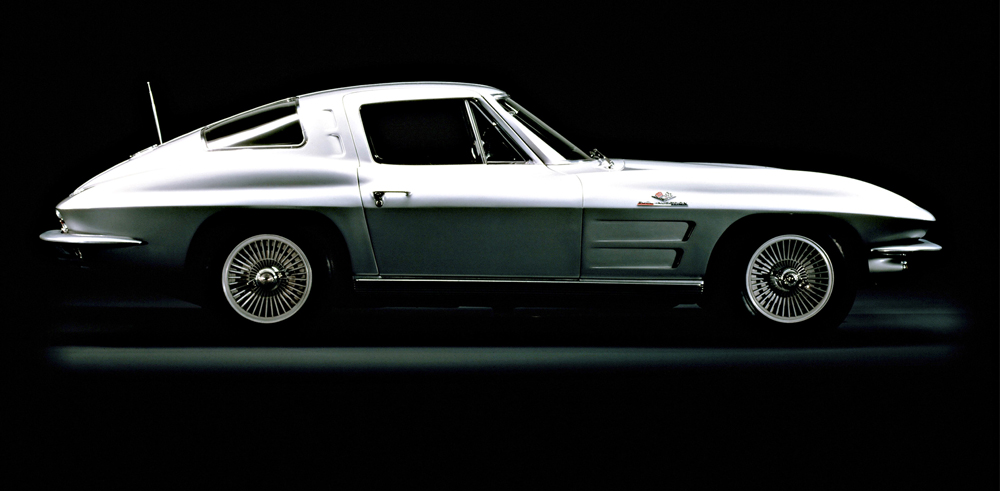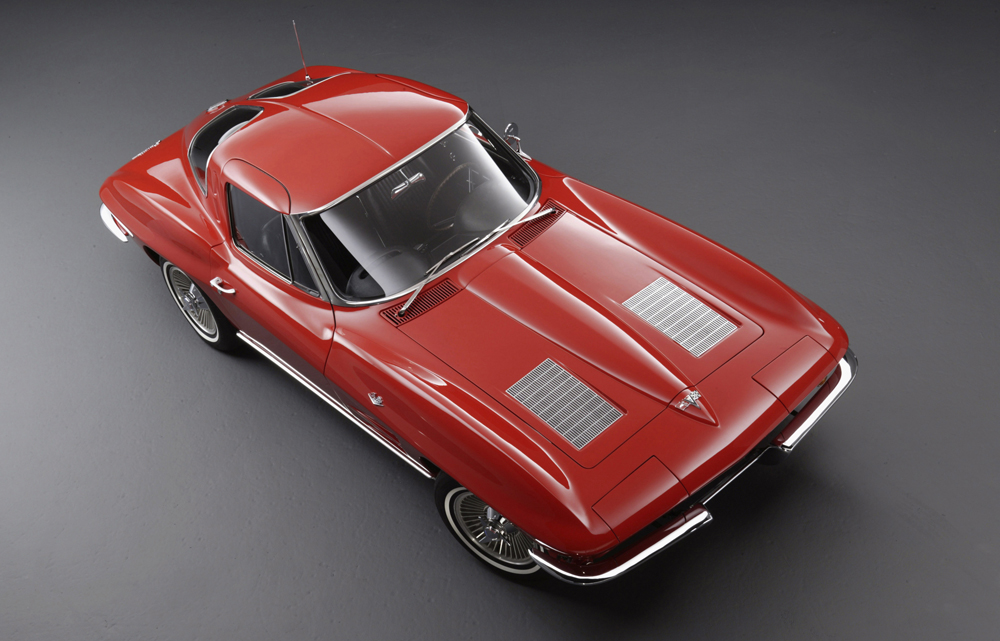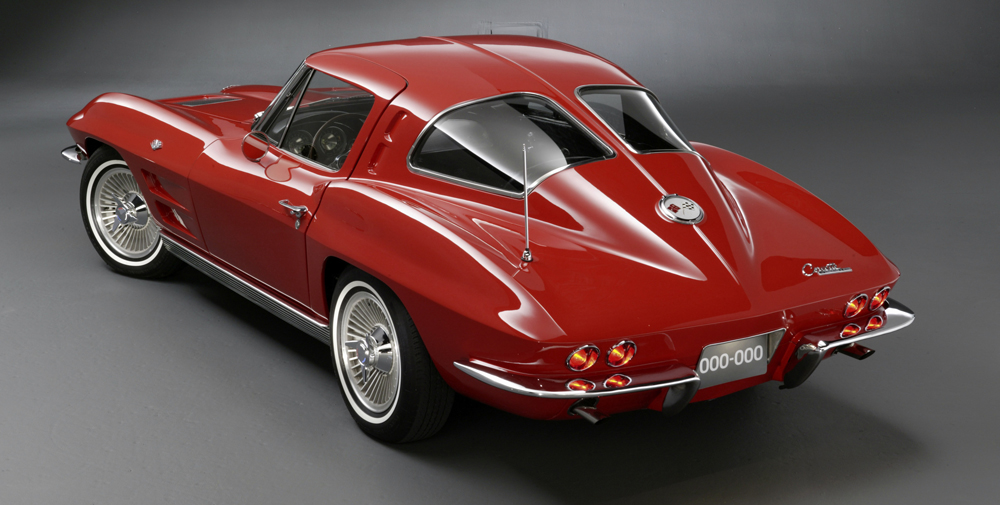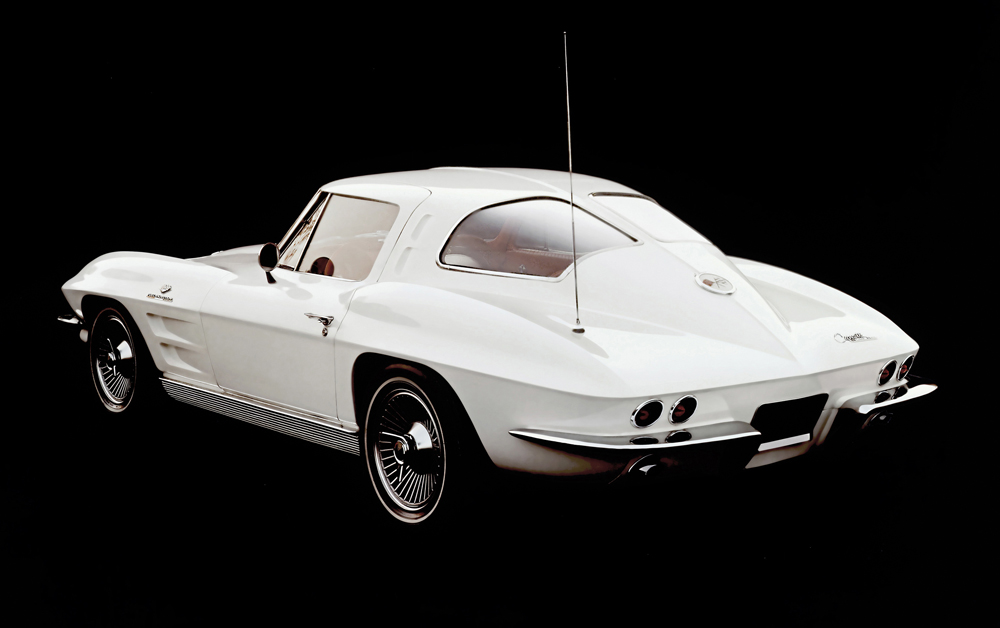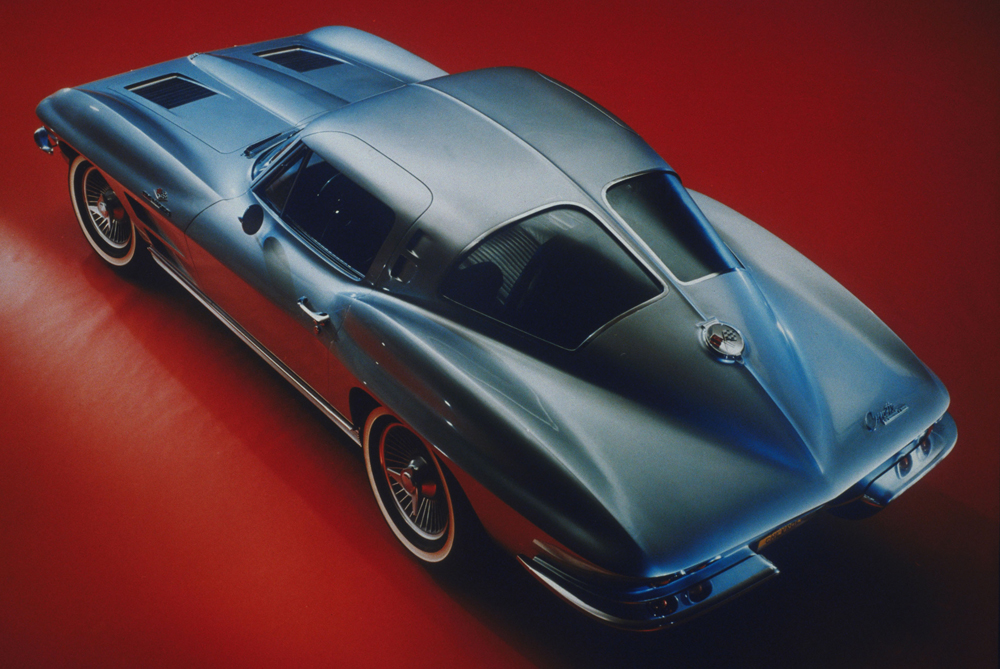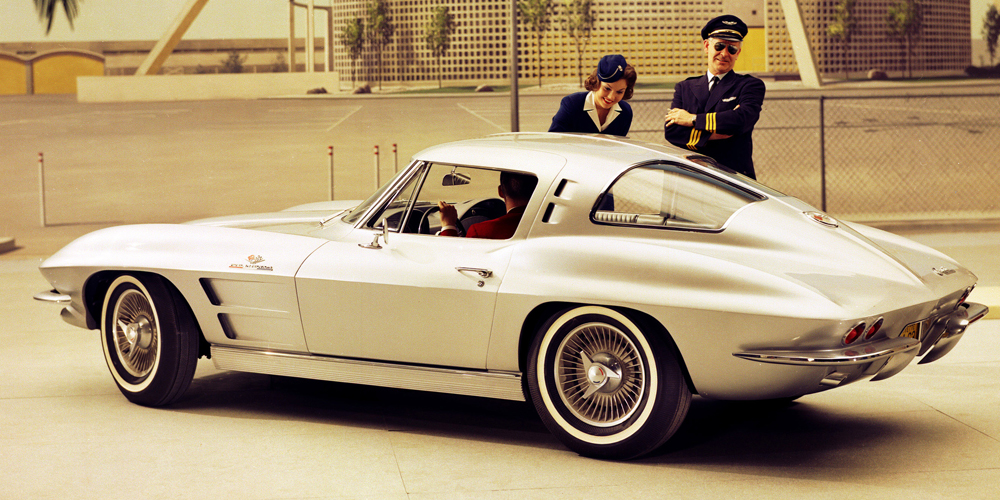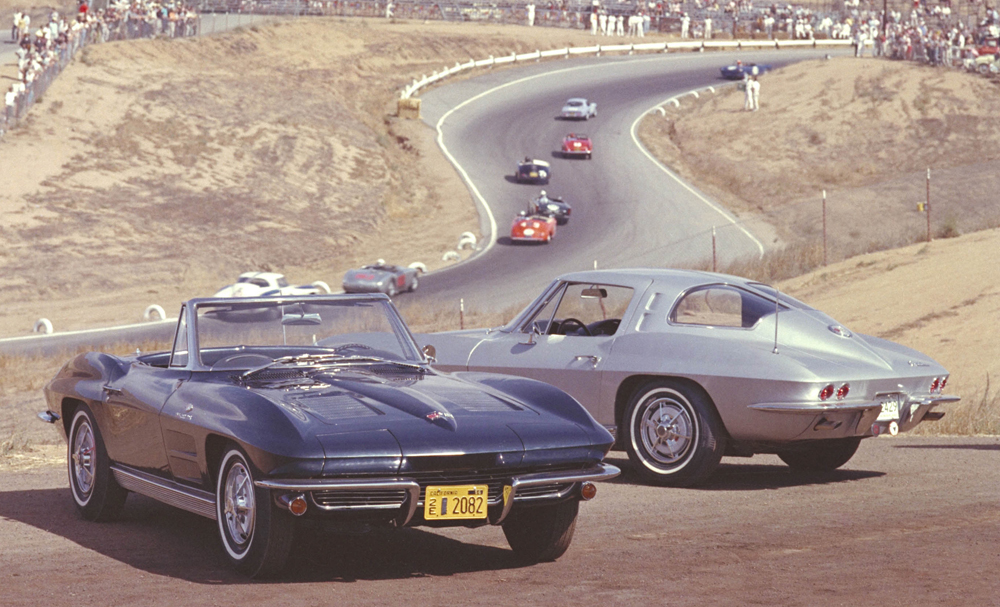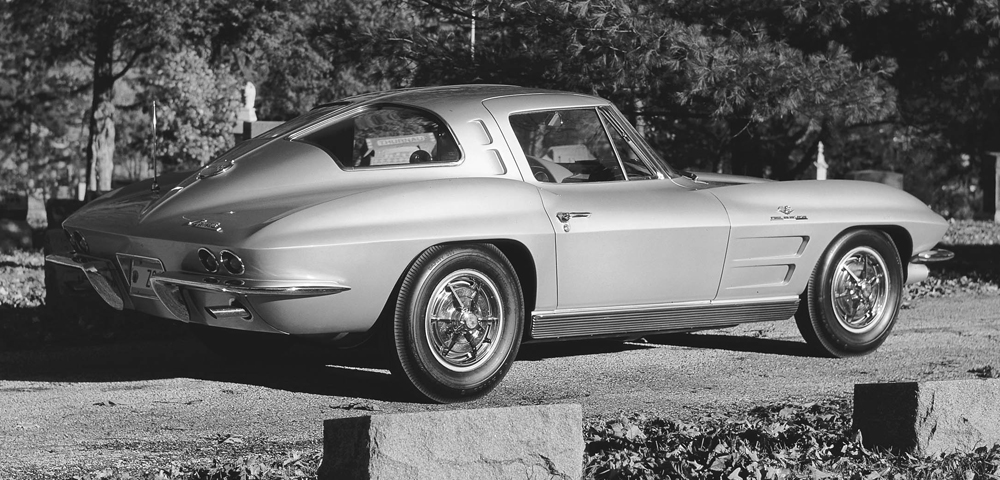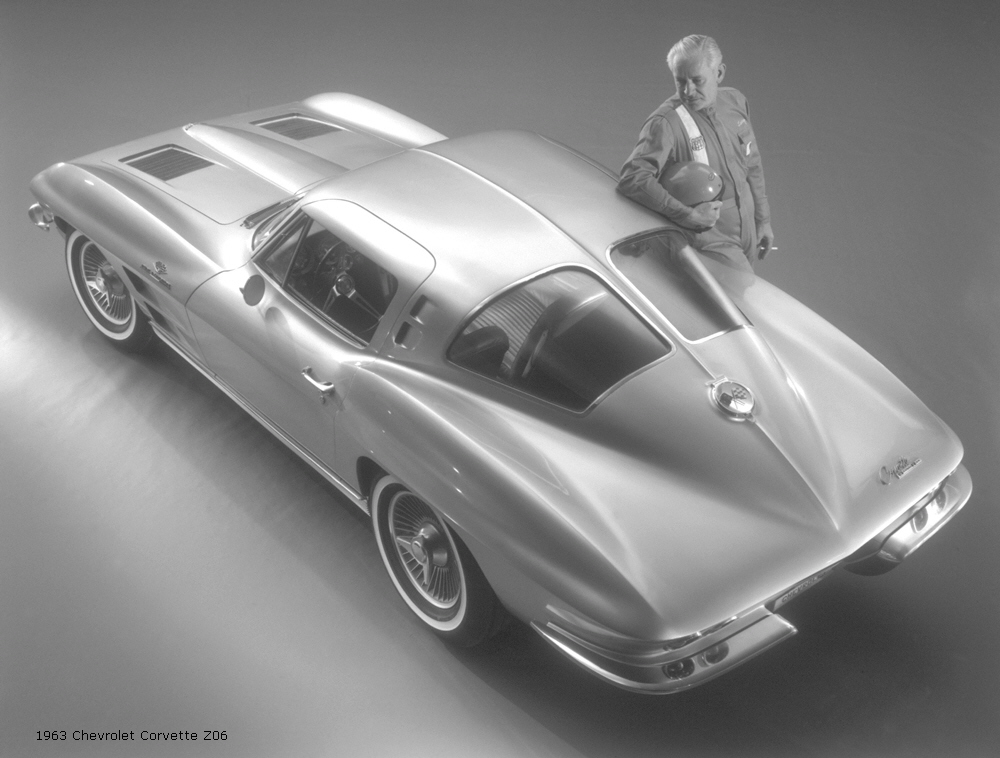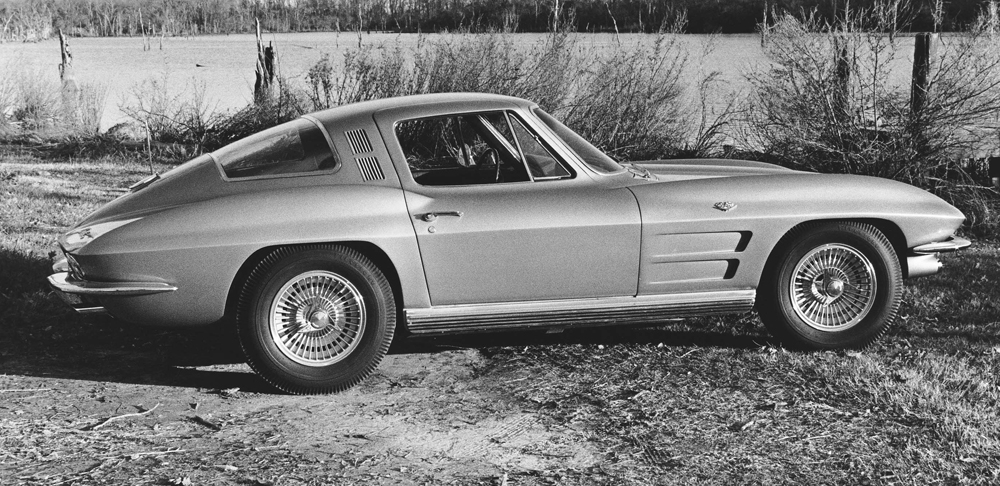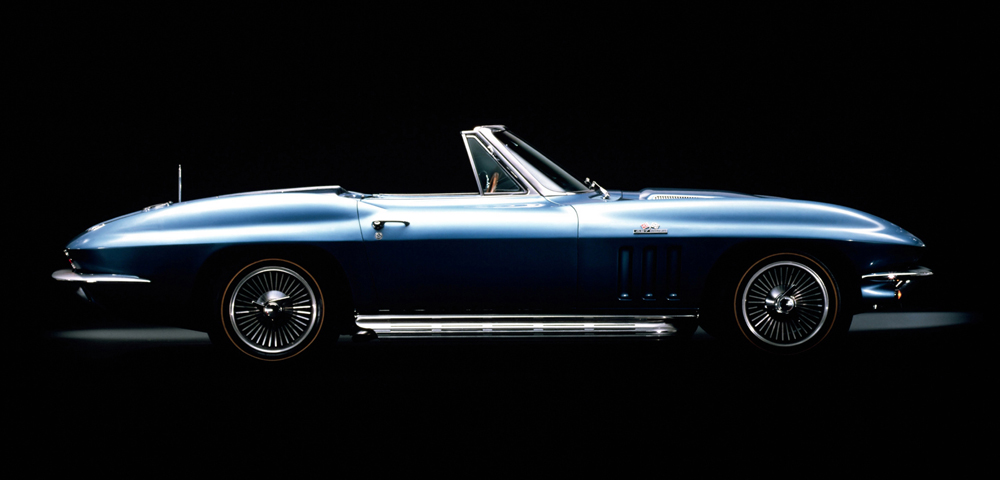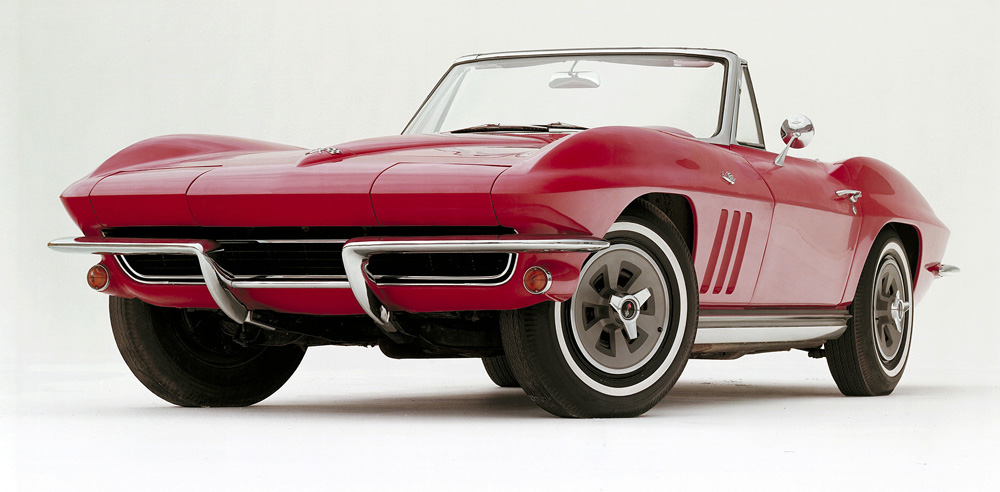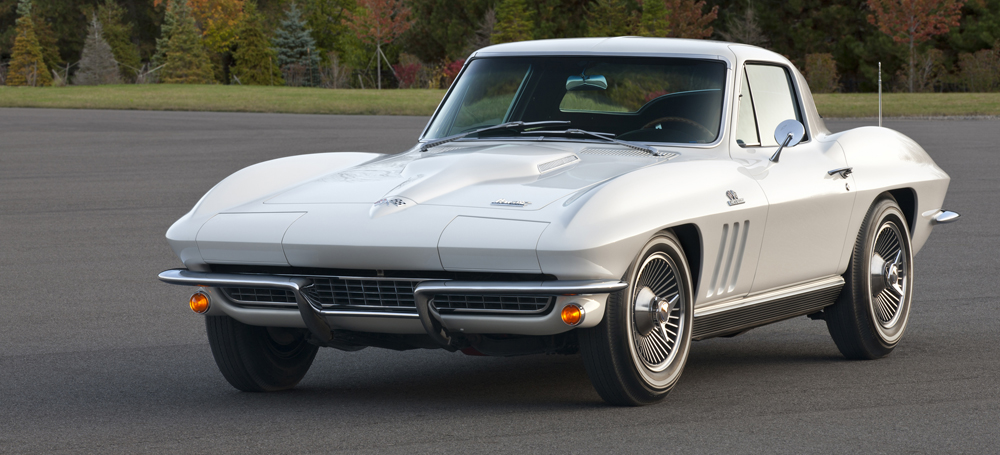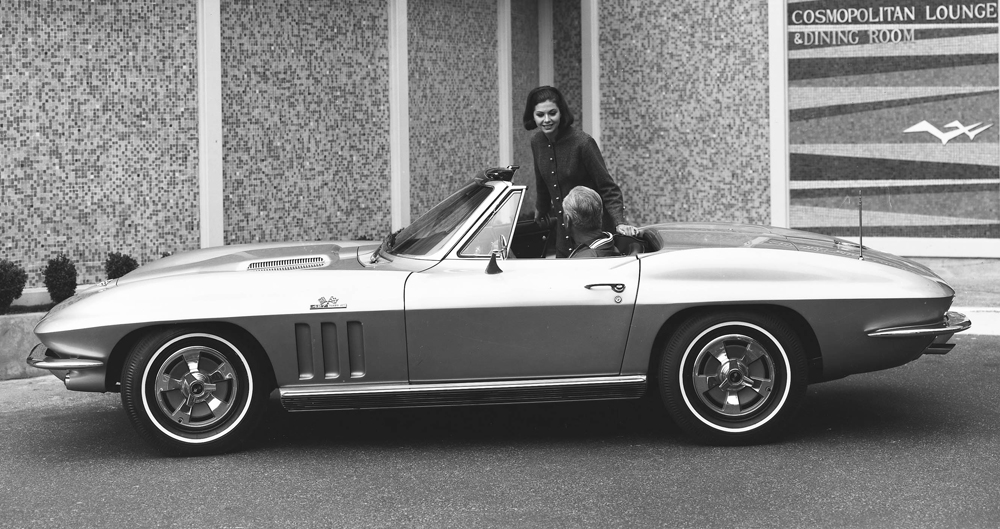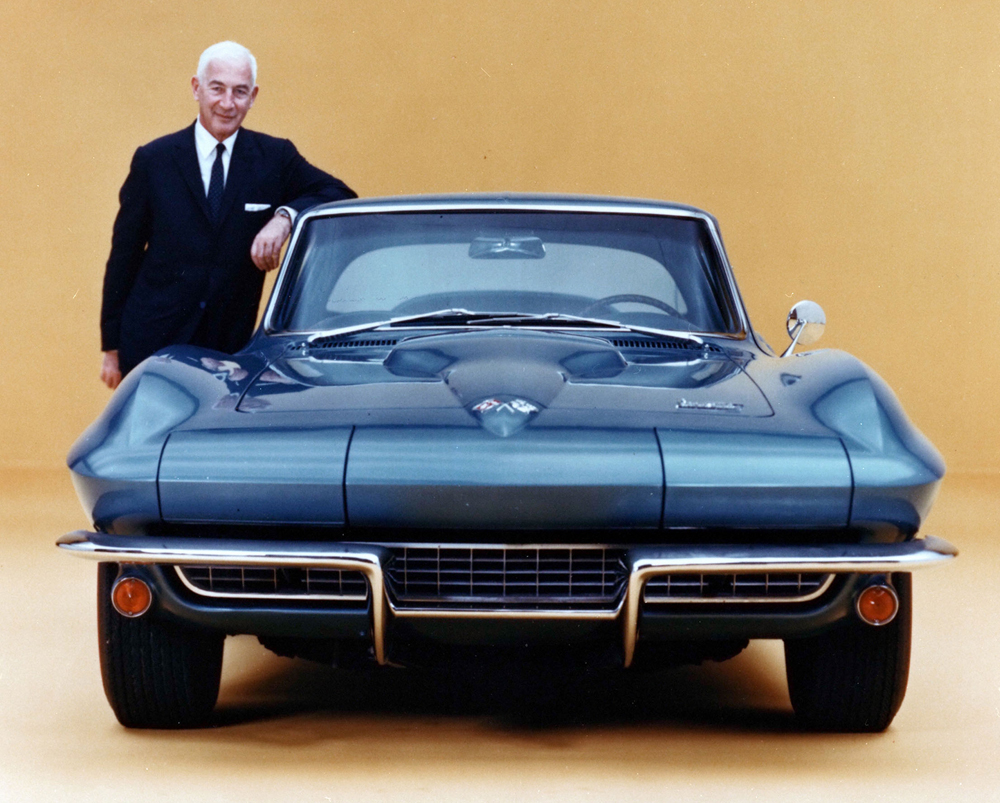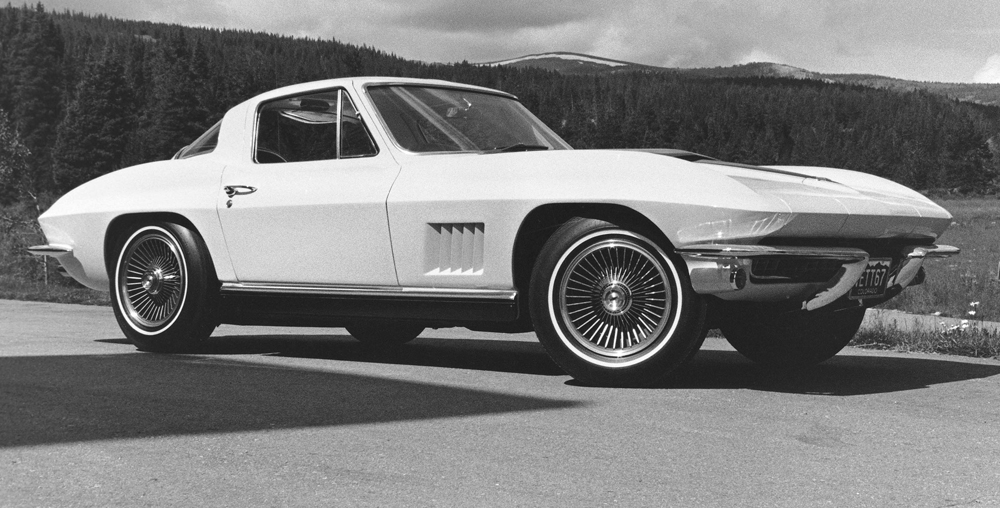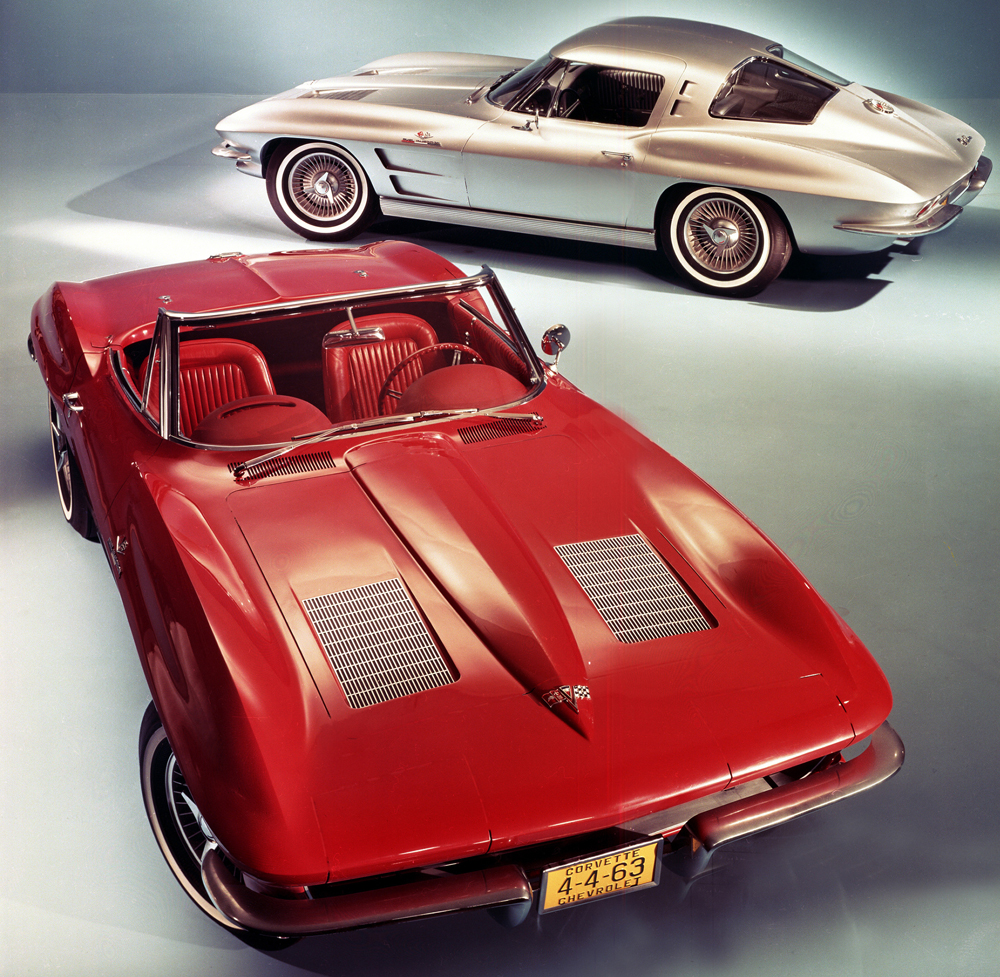|
|
|
|
1963 through 1967 Second generation Corvette - The Sting Ray's 1963 1963 Corvette Sting Ray "Split-Window" Coupe, Based on a one-off sports racer penned by design chief Bill Mitchell, the 1963 Corvette Sting Ray "Split-Window" Coupe was possibly the most exhilarating American production car of its time. Beneath its superbly tailored form, the Sting Ray featured a new independent rear suspension and offered potent, fuel-injected small-block V-8 power. New luxury options included air conditioning, leather seat trim, and the latest in infotainment – an AM/FM radio. The "C2" Corvette generation that would continue through 1967, but only the 1963 Coupe would have the famous "split-window" design. Look for: Grid-patterned simulated air intakes on hood. "Split-window" divided rear glass. Gas filler cover on the rear deck has crossed flags on white background. total restyle based on Bill Mitchell's 1959 Sting Ray race car. "What an amazing car," says Ed of the 1963 Corvette Sting Ray, the model that took the Corvette range to new heights. Based on a show car penned by GM design chief Bill Mitchell, the angular and svelte Sting Ray was more sophisticated and civilized than previous Corvettes, yet in maturing, it didn't forget that its main purpose in life was to be exhilarating, both in how it looked and how it drove. Distinctive features of the car – which continued to be built out of fiberglass – were the electrically-operated pop-up headlamps and, on the coupe, a split rear window that would go on to become its main motif. "I've lectured on this car many times," says Ed. "Everything was new; in fact it was so new, they had to give it a new name, Sting Ray. Every Corvette since then has been influenced by it, even the current models. The dual cockpit interior is still part of the Corvette and the Chevrolet interior design today."
The American sports car departs from the European tradition with a total restyle based on Bill Mitchell's 1959 Stingray race car. The new car has many firsts: Concealed, rollover headlamps; arched fenders; a streamlined appearance; two Corvette body styles, coupe and convertible; a full-independent rear suspension; and lightweight aluminum wheels. It is the only year for the split-window coupe.
See Vintage Racing Photos of the 1963 Chevrolet Corvette Z06 Racers
1964 The split-window design of was eliminated on the Coupe because it "intruded into the driver's rearward vision." Styling is similar to the 1963 model but the divided rear window and hood trim panels are eliminated.
1965 Corvette's first year for four-wheel disc brakes and the last year for conventional fuel injection. This is the first year for 4-wheel disc brakes, and the last for conventional fuel injection. A powerful 396 cubic-inch "big block" V8 with 425 hp is introduced mid-year, bringing with it a special hood.
1966 Factory-installed driver/passenger headrests debut as Corvette optional equipment. The optional 425-hp "big block" V8 is enlarged to 427 cubic inches. Factory driver/ passenger headrests make their debut as optional equipment.
Zora Arkus-Duntov with 1966 Corvette Sting Ray
1967 Standard features of the Sting Ray included an energy-absorbing steering column, four-way hazard warning flashers and a dual master cylinder brake system. A significant amount of trim is removed or restyled, and the fender vents are redesigned. Interior changes include new seats and the relocation of the parking brake from under the instrument panel to between the seats. Standard safety features of the '67 Sting Ray include an energy-absorbing steering column, four-way hazard warning flashers, and a dual master cylinder brake system.
|
|
|
